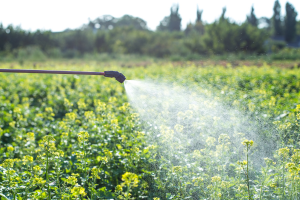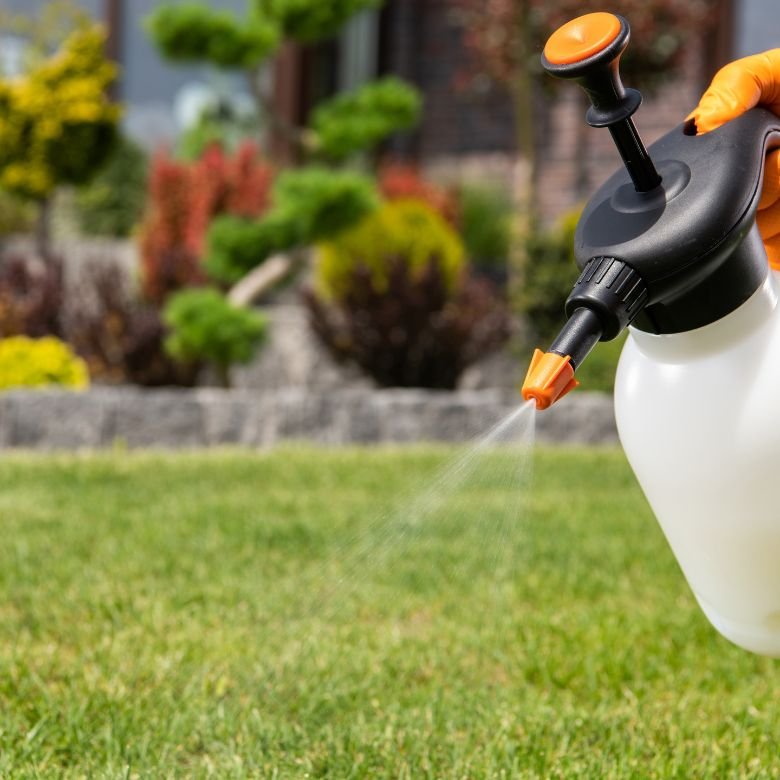When we hear about plant protection products, pesticides usually come to mind. This is not surprising, as they are the most talked about. However, it turns out that their effective use is made possible by auxiliary substances such as adjuvants. What are they, how should they be used and does their formula matter? We answer these questions in the article below.

What are adjuvants?
You probably know what chemical plant protection products are — the classification of these products is based on their properties and use. These include the pesticides already mentioned, i.e. substances that help us to control various types of pests and fungi. They are used not only for cultivated plants but also for small gardens. Pesticides are divided into synthetic and natural. They can have an impact on increasing crop yields by reducing disease development or bacterial proliferation, and can extend the shelf life of many products. However, for this to happen, the support of different types of adjuvants is necessary.
Adjuvants are agrochemicals, sometimes referred to as boosters, which provide support for the active substances in plant protection products. When added to pesticides, they enhance their properties. They have a similar effect in application liquids, making it possible to introduce them directly into sprayers.
- Adjuvants include, among others, surfactants and vegetable oils. We describe their types later in the text.
- The use of adjuvants is necessary because fungi and bacteria can produce defence mechanisms, which include biofilms and their waxy surfaces. They impede the penetration of pesticides. It is the adjuvants that enable the barriers produced by harmful micro-organisms to be overcome.
Although adjuvants are only auxiliaries, all plant protection products should be used with caution, taking into account the conditions of the environment.
For what purpose are adjuvants used?
Spray adjuvants and other types of these substances have many functions. Among the most important of these are:
- lowering the surface tension of the solution, thus enhancing the effectiveness of plant protection,
- increasing the adhesion of the formulation,
- facilitating the spreading of the product on the plant surface,
- destructive effect on harmful organisms,
- increasing the miscibility of the preparation and ensuring the homogeneity of the resulting mixture,
- an increase in the efficiency of pesticide penetration into the weeds.
Adjuvants are particularly worth using when you are struggling with unfavourable plant growth conditions, such as the colonisation of difficult-to-eliminate weeds and microorganisms or excessive rainfall.
What is worth considering when choosing plant protection products? Chemicals in the garden should be used judiciously, so make sure you buy preparations from a trusted manufacturer. Also remember to select products according to the needs of your plants and soil. Indeed, an inadequate adjuvant can do more harm than good and thus reduce yields.
Learn about the advantages of using adjuvants
Let us return to the subject of pesticides for a moment. Earlier, we focused on why they should be used. However, you are also bound to have come across negative reviews of them. Unfortunately, many of them have their justification; after all, pesticides often destroy not only harmful but also beneficial organisms. Combined with their ability to move, e.g. by wind, they can have a negative impact on the ecosystem and biodiversity. In addition, pathogens are becoming increasingly resistant to many plant protection products. Why is this information so important in the context of soil adjuvants? Because they make it possible, in many cases, to reduce the amount of pesticides used, thus reducing our impact on the environment. Among their advantages we can also mention:
- enhancing the effect of plant protection products, e.g. by increasing their adhesion (so that pesticides do not run off with the rain),
- increase spraying efficiency,
- biodegradable and low environmental impact.
In the PCC Group’s range you will find products from the EXOwet and EXOemul ranges. They show excellent wetting properties and enable the production of adjuvants based on plant and mineral substances.

Types of adjuvants — Does choice matter?
We can divide adjuvants according to their properties and origin. The most common classification includes oil-based adjuvants, mineral-based adjuvants and surfactants.
Surfactants, that is surface-active agents
They exhibit a range of useful properties, from wetting and washing, to foaming or anti-foaming (depending on the final product application) and emulsifying. Surfactants used in plant protection products have anti-foaming properties (they do not generate foam). Wetting, on the other hand, means that a greater amount of the product remains on the surface of the plant thanks to the adjuvants. This property works well not only in garden chemicals but also in laundry detergents. Surfactants also have an emulsifying effect. The addition of emulsifiers is particularly important for natural adjuvants such as vegetable oils.
Oil adjuvants
These substances have the ability to reduce the evaporation rate of the spray and increase the adhesion of the product to the surface (adhesion). They dissolve herbicides, aiding their action and increasing the level of absorption of active substances into the cells of harmful organisms. They are most commonly used in agriculture to control weeds.
Oil adjuvants find many supporters due to their natural origin. These products use plant extracts. Among other things, they increase oilseed rape and potato yields by protecting them from pests.
Mineral adjuvants
These are formulations based on nitrogen compounds. They soften hard water and improve the penetration of herbicides into weed cells. Most commonly found in fertiliser formulations including, among others, ammonium sulphate.
- There is also a distinction between multi-component adjuvants, i.e. adjuvants that contain ingredients from several of the above-mentioned groups. They exhibit a comprehensive action and significantly increase the effectiveness of plant protection products.
- You may also come across terms such as soil adjuvant or spray adjuvant. These names will tell you how to dose the substance of your choice. Whichever formulation you choose, remember to select the type of adjuvant according to the surrounding conditions and the type of plant.
The sustainable production of adjuvants, as well as purchases made from reliable producers, make a huge difference to crop yields, human and animal health and the state of the environment. The PCC Group is committed to green chemistry and the biodegradability of its proposed products, as evidenced by numerous certifications. We have already been trusted by hundreds of customers. You can join them by selecting products from our wide range or by contacting our team!
- Adamczewski K., Matysiak R., "Adiuwanty do środków ochrony roślin-podział i klasyfikacja", Ochrona Roślin, nr 41 (1997), s. 16-18
- Matysiak R., et al. "Adiuwanty do herbicydów-mechanizm działania", Materiały Sesji Naukowej Instytutu Ochrony Roślin, nr 31 (1995), s. 67-72
- https://wiescirolnicze.pl/uprawy/adiuwanty-kiedy-i-jak-stosowac/
- https://psor.pl/czym-sa-srodki-ochrony-roslin/
- https://www.wir.org.pl/archiwum/raporty/adiuwanty.htm